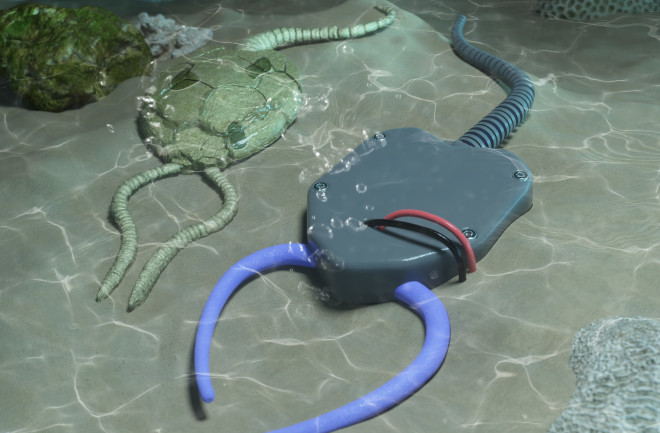Around 500 million years ago, a strange ancestor of the modern sea star, sea urchin, and sand dollar swam above the Paleozoic seafloor. Classified as a pleurocystitid, the animal resembled an armored stingray in its appearance, armed with what looked like a set of swooping antennae.
One of the first of its phylum to move around autonomously, its segmented tail swept from side-to-side to swim forward. Robotics researcher Richard Desatnik and colleagues identified the creature’s method of movement in 2023, after constructing robot replicas of the creature to simulate its swim.
Published in PNAS in November 2023 and set to appear in a presentation at the 68th Biophysical Society Annual Meeting in February 2024, the researchers’ work testifies to the wide variety of applications of ancient-animal-inspired robotics.

